Somewhere on your timeline you have seen it: a navy blue, short-sleeved button-up shirt, printed with impossibly bright oranges. This one shirt has appeared in the selfies of countless queers over the course of spring and summer 2022. Though it has been particularly embraced by non-binary people and trans lads, its appeal reaches far beyond our borders. Indeed, within a few short months, the Old Navy orange-print shirt—hereafter referred to as, simply, The Shirt—has become an unofficial queer uniform.
How did The Shirt achieve universal prominence so quickly? What does it signify about the queer condition? What if I like the pink one with lemons better? What is the source of The Shirt’s power, and can it be stopped?
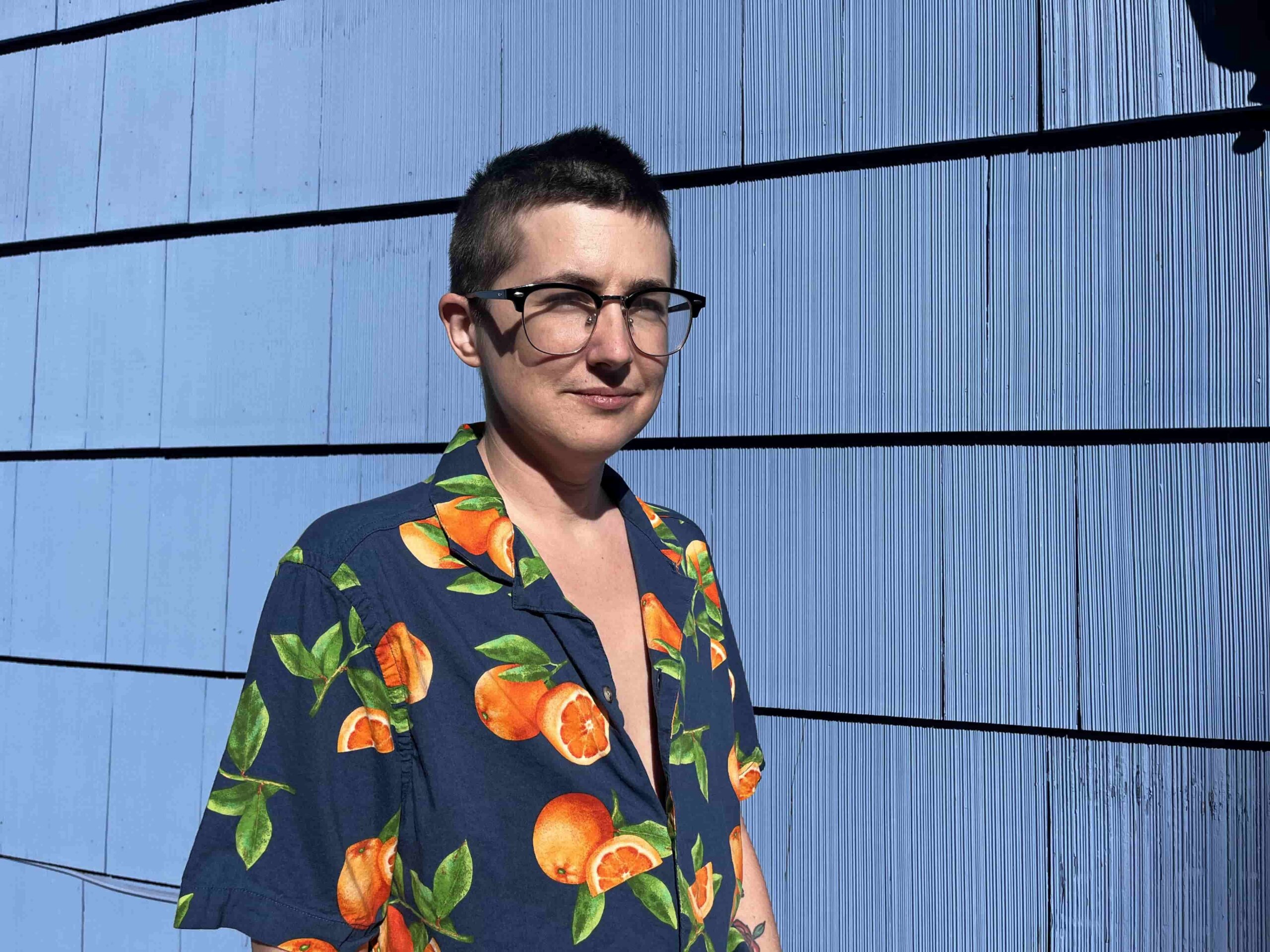
Credit: B. Michael Payne
Using my skills as a journalist, I set out to answer these questions. What follows is a tale of Twitter virality, corporate greed, fame, family, HBO Max subscriptions and at least one legitimate celebrity who took time to do a Zoom with me. Without further ado:
The birth of a legend
Our story begins on April 21, 2022, when Twitter user Antonia Terrazas entered a North Carolina mall with phone in hand. In a moment of boredom, she sighted a wall display of four button-up shirts and Tweeted out a photo, captioning it: “Hot Transmasc Summer collection just dropped at Old Navy.” The Shirt’s rise to power had begun.
ANTONIA TERRAZAS, influencer (she/her): “I was at our regular Old Navy in Durham, and I was accompanying my partner, who often buys a lot of Old Navy things and then returns them. I was waiting for her. And as she was checking out, I saw this wall of vibrant, printed coloured shirts. And I was like, Huh,’ that looks like every trans masc I’ve ever seen.’”
Terrazas tweeted the photo. Trans mascs around the world immediately responded by telling her that she was correct. The photo ricocheted around queer Twitter, spawning Instagram and TikTok responses, and a star was born.
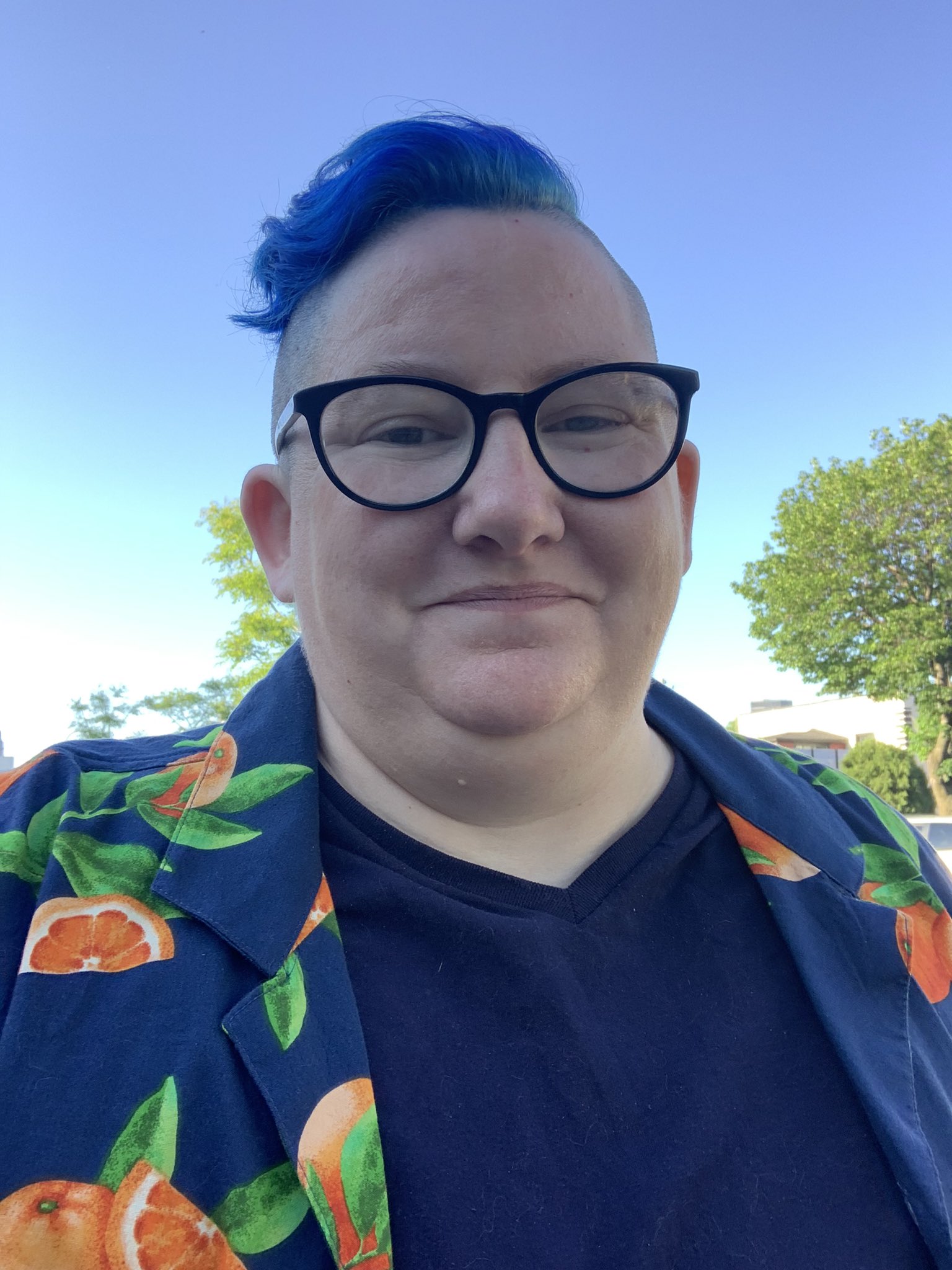
Credit: Courtesy of Dianna Anderson
DIANNA ANDERSON, author (they/them): “Antonia, a Twitter mutual and friend I’ve had for nearly a decade, went mildly viral for a tweet about Old Navy’s button-up shirts.”
MEG JONES-WALL, author (she/her): “I wish I could tell you exactly the first video with [The Shirt] that I saw, but I truly feel like I saw it so many times in such a short time period that it was like it had suddenly always been there.”
MILO, transgender shirt owner (he/him): “Literally saw you [Jude Doyle] tweeting about it.”
A nerve is struck
Herein lies one of the strangest manifestations of The Shirt’s appeal: Terrazas’s tweet was clearly affectionate, but it was also sort of a dunk. She joked that all trans guys wear the same shirt, and we responded by going out to buy the shirt in question. Do we really all dress like this? Does anyone else?
TERRAZOS: “It was probably one of my favourite days on the internet, personally, and I’ve been on Twitter—wow, God, I’m old—since 2009. It was so, so fun because most of the engagement I saw were quote-tweets from queer folks being like, ‘Oh my God, this is me.’ Or like, ‘Oh my God, I have to have this’ or ‘Wow, sick burn.’ It was just so joyful to open my Twitter and have all these queer folks just like, feeling seen.”
ANDERSON: “A thousand percent, it is exactly the sort of thing I wear. My aesthetic is very much ‘Your dad on a vacation cruise.’”
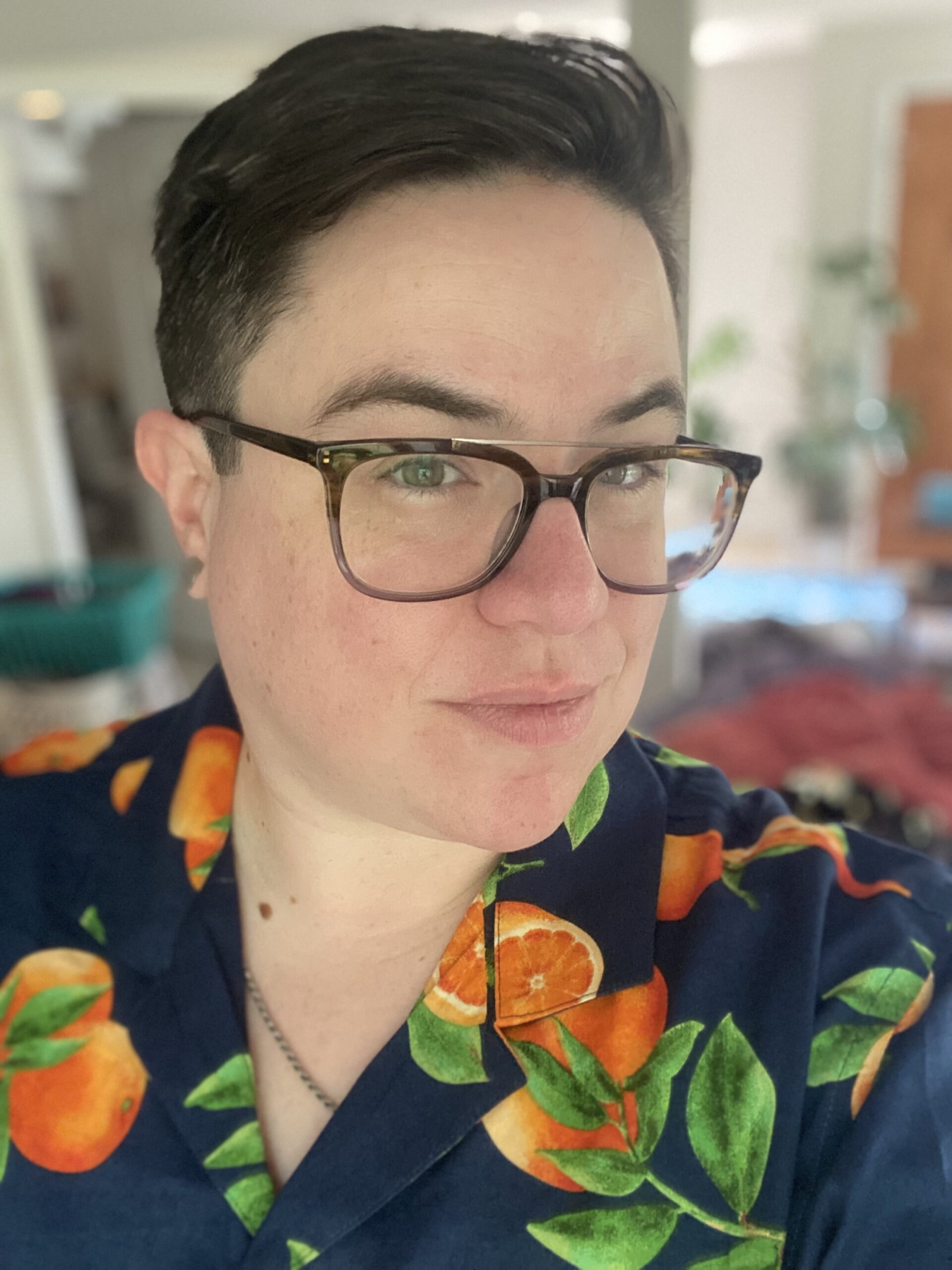
Credit: Courtesy of Louisa Smith.
LOUISA SMITH, graphic designer (she/her): “I would describe my summer style as ‘dad at a cookout.’ You know, a dad in a colourful button-down tucked into his belted khaki shorts or cut-offs, one hand on his hip, the other holding a drink as he surveys the children playing in a sprinkler, or pokes at the grill.”
TRISTAN, non-metaphorical dad (he/they): “I don’t exactly remember how I transitioned to wearing them. It turned out to be the lesbian uniform, which was hilarious and comforting because I’d always been a dyke tyke, and was effectively adopted by a pack of wild lesbians as a young feller, and a chunk of my gender identity is wrapped up in having been mistaken for (at different times in my life) a woman or a trans man.”
MEL WOODS, culture editor for Xtra (they/them): “My very first freelance piece I ever wrote way back when I was a baby gay was for Slate. And it was about how fun, patterned button-ups are the ultimate queer signifier. No matter what letter on the spectrum you are, everybody has a love for a fun, patterned button-up shirt.”
Our shirt means death
The Shirt was a hit. Lesbians wore it to look like dads! Dads wore it to look like lesbians! Nonetheless, it remained largely an underground phenomenon. Thena humble HBO show about gay pirates with emotionally significant orange orchards came to the rescue, and on May 5, 2022, The Shirt received the coveted celebrity endorsement that would vault it to fame.
JONES-WALL: “I’m not sure that I can speak with authority about the full cultural significance of the shirt, but for me it’s directly tied to my love of Our Flag Means Death and the non-binary character of Jim, played by Vico Ortiz.”
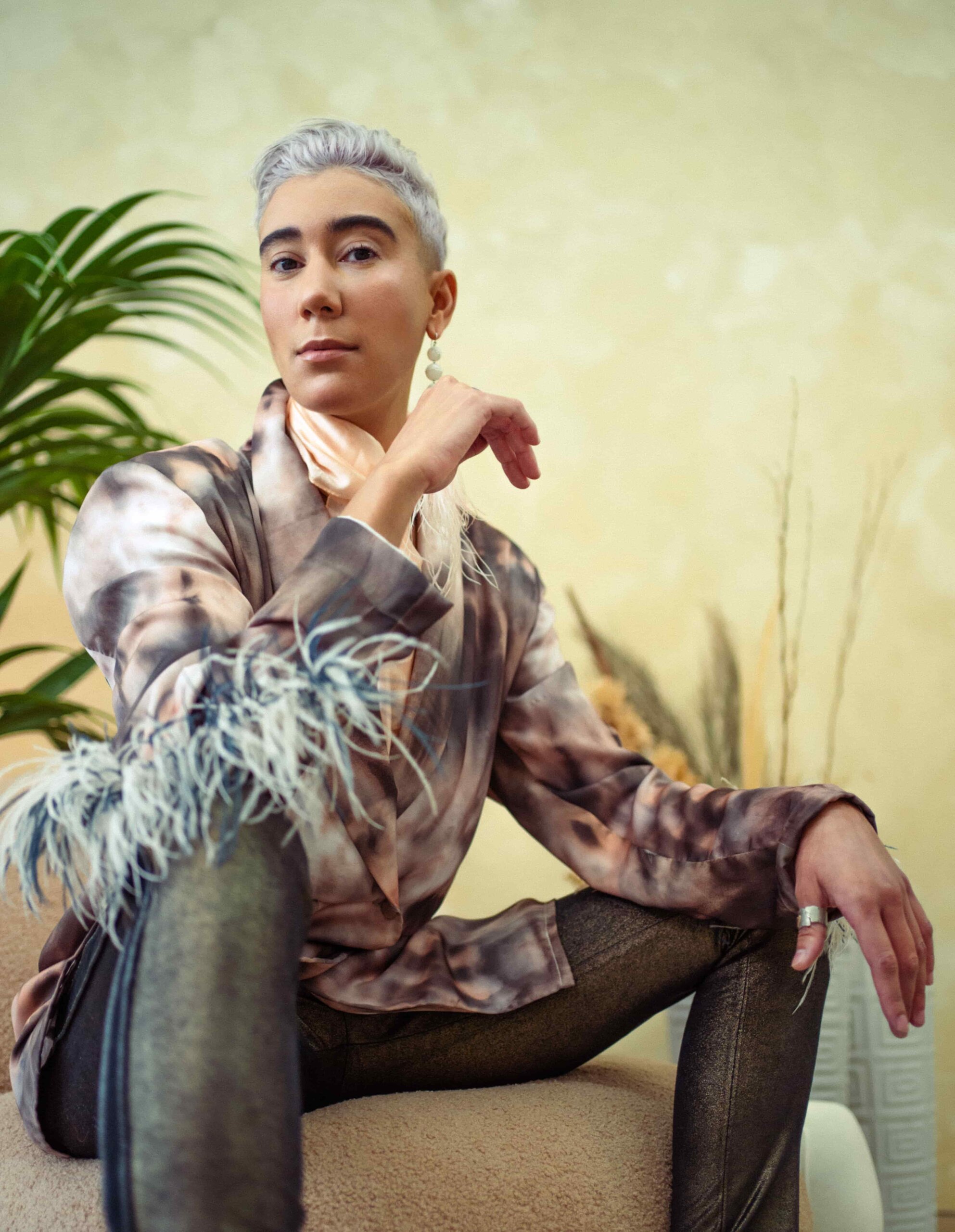
Credit: Val Vega
VICO ORTIZ, legitimate celebrity (they/them): “[People were like], ‘I saw this shirt! It reminded me of Jim!’ And I was like, ‘That’s fun.’ Now, I was in Puerto Rico at the time and was doing a little bit of Mother’s Day gift-purchasing at a mall. And I was like, ‘This mall has an Old Navy. I want to see what’s up.’ And then I saw The Shirt.”
Captivated by The Shirt’s charisma, Ortiz soon found a whole line of clothing in the same fabric. Ortiz grabbed The Shirt and a pair of boxers (the store was out of swim trunks) and went to their family backyard, where The Shirt would get its first taste of Hollywood.
ORTIZ: “I go to my parents’ house, and I was like, ‘Brother, I need you to make a video for me.’ And then I tell my brother I want to do it with this music in the background and stuff, and I put the whole thing on. And then my dad, like, sees me with the outfit and he’s like, ‘Wait, wait, wait! You need an orange! An actual orange!’ It became a whole production, a short film. Like, ‘There’s a sword!’ Suddenly a very simple video turned into having the sword and having the orange and my dad directing and my brother being the DP. And then we did it [laughs], and that’s the origin story. I was like, ‘I’m going to post it tomorrow,’ and then it kind of blew up and I was like, ‘Oh, wow. I’m an influencer.’”
Shirt club
Thus, The Shirt hit the mainstream. But had success spoiled The Shirt? Was it still fun to wear when you knew that everyone else would be wearing it, too? If you have been paying any attention at all to this story, you know that the answer is “yes.”
SMITH: “I like that it seems to have become this cultural thing specifically for queer people. We don’t get a lot of trends specifically for us, you know?”
JONES-WALL: “To me, it’s kind of exciting that I might theoretically see another queer person walking around in Brooklyn, and we might both have The Shirt on at the same time. I don’t think that’s ever happened to me before.”
DR. SHAUN COLE, associate professor of fashion at Winchester School of Art (he/him): “Queer people have historically sought to find ways to dress. On two extremes, I guess. One is to hide and to pass, you know, to blend invisibly into heteronormative society and not be identified. But also, while doing, that to find subtle ways of signifying to other queer people that they are queer. Ways of saying, ‘I am here, spot me. I want to be able to spot you.’ Historically, there were things like Oscar Wilde’s green carnations, there were red ties in New York in the 1930s. Suede shoes were a sort of transatlantic thing.”
ANDERSON: “It’s almost like The Shirt has secret meaning, and a coded language that only people who are part of the in-group will understand.”
SMITH: “I look forward to playing ‘spot the fellow gay person’ all summer.”
The grim role of rainbow capitalism
Alas, as so often happens in tales of a sudden rise to fame, there was a darker side to this story, and it centred around money. Even as queers flooded the aisles and online checkout carts of Old Navy, the corporation remained indifferent, and, indeed, did not seem to know that their shirts had become gay-famous until I emailed them about it repeatedly.
ORTIZ: “Old Navy is, like, the straightest place to go shopping.”
ANDERSON: “When I bought my shirt, the cashier was like, ‘A lot of people are buying this shirt. Weird.’ And I’m pretty sure she said ‘weird’ because the people buying the shirt probably look like me.”
In a cruel twist, Old Navy betrayed the very woman who had lifted The Shirt from anonymity: Antonia Terrazas, who repeatedly expressed the desire for Old Navy Super Cash on Twitter.
TERRAZAS: “For a while the smaller sizes were running out and I was like, ‘Oh my God, is there a run on these shirts because of this very silly tweet?’”
OLD NAVY SPOKESPERSON, an innocent bystander trying to do their job (she/her): “We don’t break out sales figures by item.”
TERRAZAS: “Listen, I’m always going to keep buying Old Navy shit because they’ve got me. But, you know, I would love some dollars. Super Cash, at least.”
OLD NAVY SPOKESPERSON, clearly realizing this interview was a bad idea: “It’s actually against [Federal Trade Commission] guidelines to retroactively compensate any creator for posts that weren’t sponsored. It has to do with the rules around disclosing sponsorship on posts.”
TERRAZAS: “You know, again, they’re a corporation. I feel like they could do whatever they wanted to.”
ORTIZ: “I’d much rather have people support small, queer businesses than Old Navy.”
The joy of shirts
As any faithful viewer of VH1 Behind the Music knows, the grim and conflict-riven portion of a story about fame is immediately followed by a warm-hearted reflection on the band and its enduring legacy. This story is no different: after only three months of queer existence, The Shirt has become deeply interwoven into the fabric (ha) of our community.
ORTIZ: “It’s so cute! I’m getting videos and photos of whole families wearing the outfit, like watching movies or going to the beach. And I’m just like, ‘This is amazing.’ Now I want a dog and to dress the dog in The Shirt as well. That’s a level of commitment that I am not quite ready to assume yet, but I am very excited for when it does happen.”
TERRAZAS: “I was really hoping someone would wear one to my wedding. Like, as the gift, obviously. But that did not happen.”
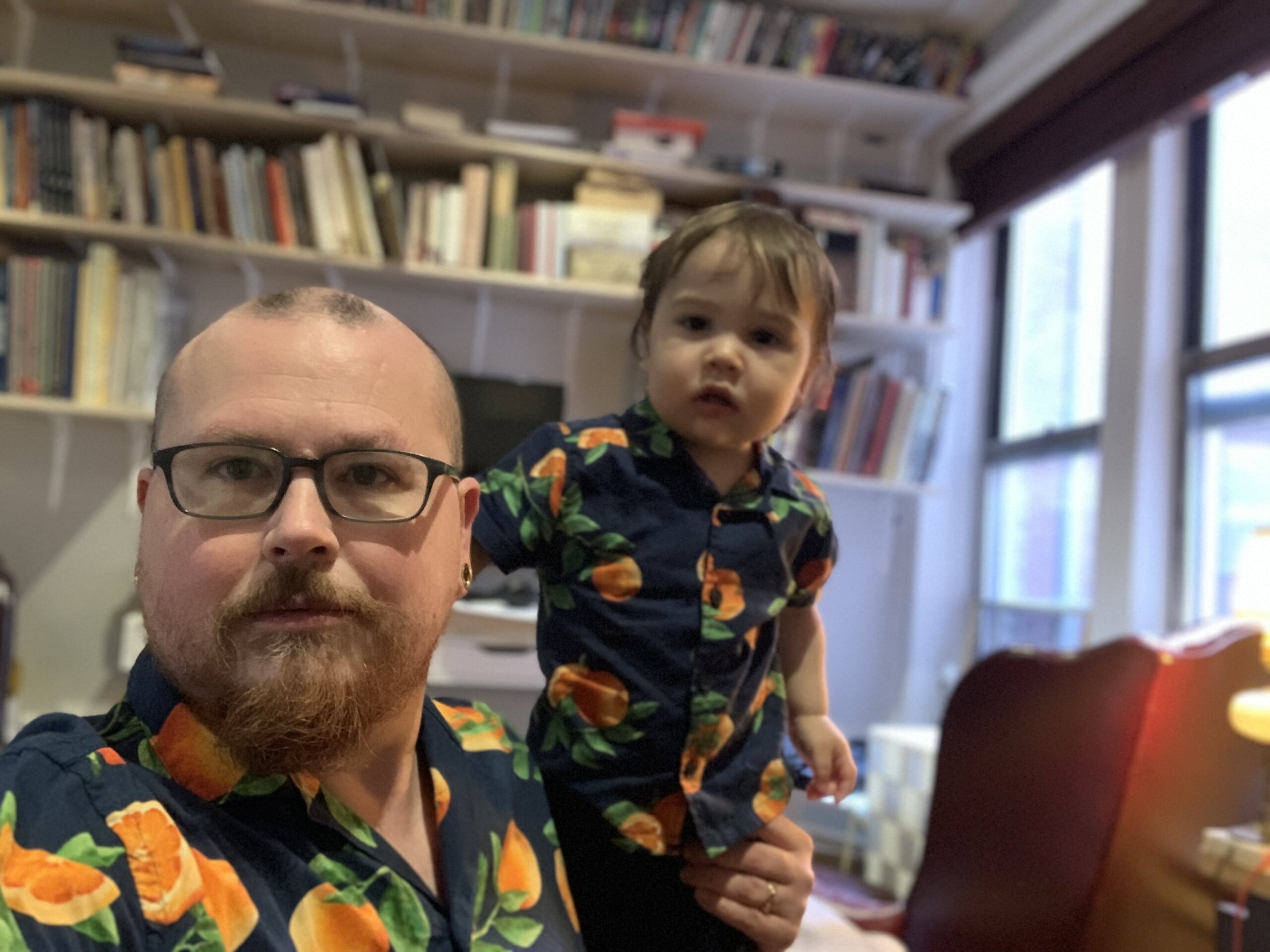
Credit: Courtesy of Tristan
MILO: “I may actually be wearing The Shirt with a low-chroma blue linen suit to a cishet family summer wedding.”
TRISTAN: “The great thing about kids under two is they’re basically a canvas for parental amusement. I’m gonna try to be seen in public with us both wearing it as much as I can.”
Why?
I’m genuinely asking. Why this shirt? Why now? How did this happen? Why do I own two of them? There are precedents for this kind of real-life memeification—the Blahaj IKEA shark for trans femmes, sourdough starters for COVID-19 quarantines, the Fleabag jumpsuit for women who are cooler than I am—but among them all, The Shirt stands unique in its reach, power and ability to unite disparate factions of the LGBTQ2S+ community. Seriously: what the fuck?
ANDERSON: “For a lot of queer people, especially, in my experience, trans mascs, there’s a loneliness that comes from feeling like you’re the only one who knows what you’re feeling or knows your experience. And a thing like a shirt can act as shorthand to feel some further connection to a wider community. It’s a simulacra of community when in person community has become risky.”
TERRAZAS: “It’s just so wonderful to have moments of queer and trans joy in the midst of all the pain and fear queer and especially trans folks are experiencing right now. Being able to laugh with and at each other about something silly like this isn’t a big deal, and yet it’s also how we show up for each other. It’s lovely to have moments of sweetness when everything is so hard.”
ORTIZ: Now, when I walk into the crowd and I see someone with The Shirt on, I’m like, ‘HEYYYYYY.’ I know they’re not only queer, but a fan of the show. And I go, ‘What’s up?’ Which would be really awkward if I met someone who was not either. Me being, like, ‘AHHHHHH,’ and then, ‘Oh, no, that’s all right. Sorry for that.’”
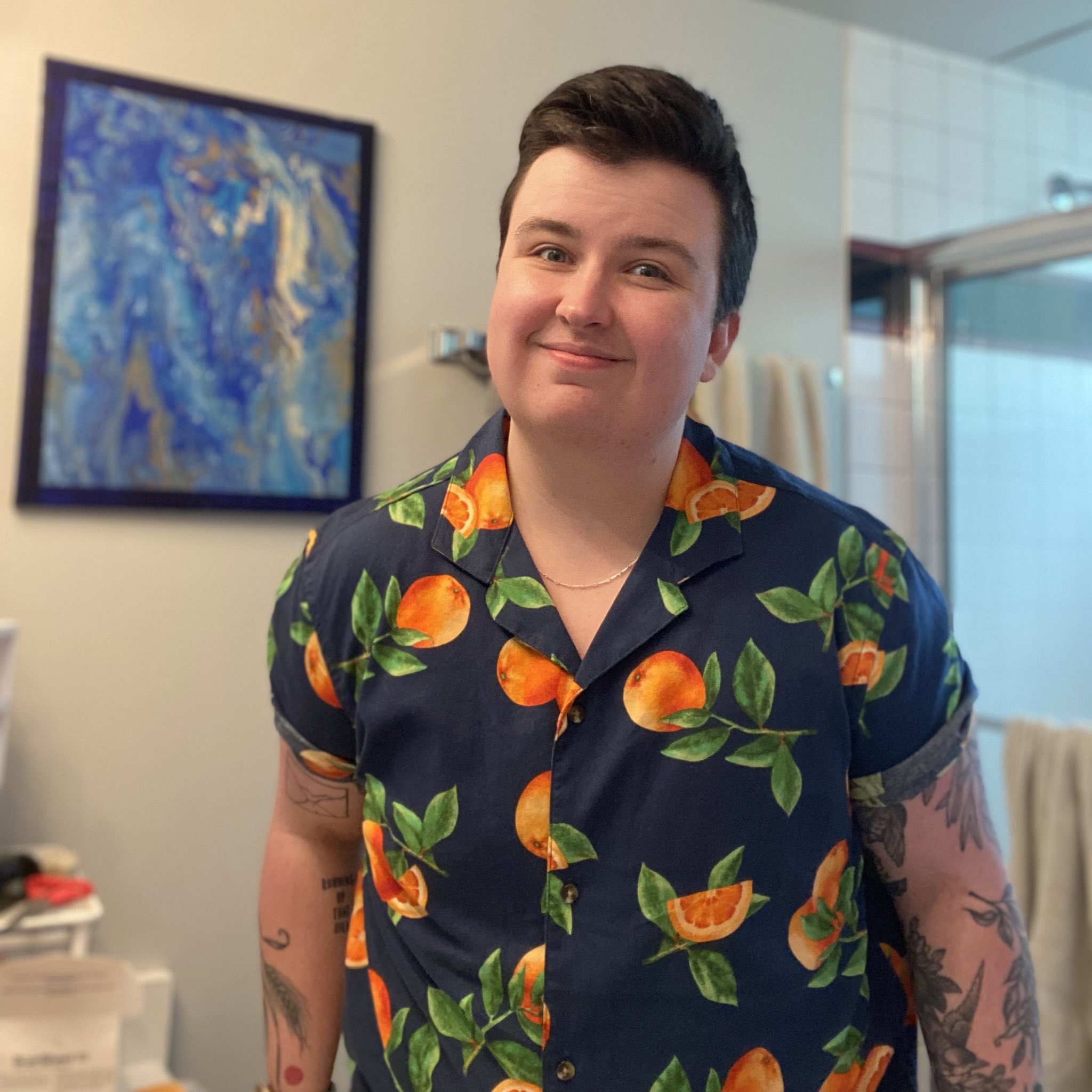
Credit: Courtesy of Mel Woods
DR. COLE: “I thought about the Jeanette Winterson novel Oranges Are Not the Only Fruit. I think queer culture is very good at playing with words, reclaiming words that have been abusive or prejudicial, you know, the reclamation of ‘queer,’ for example, the reclamation of the word ‘fag,’ the reclamation of the word ‘dyke.’ And perhaps here there’s this sort of subconscious reclamation of the idea of fruit.“
WOODS: “It’s this way of saying you know, for lack of a better term, ‘I’m fruity.’”
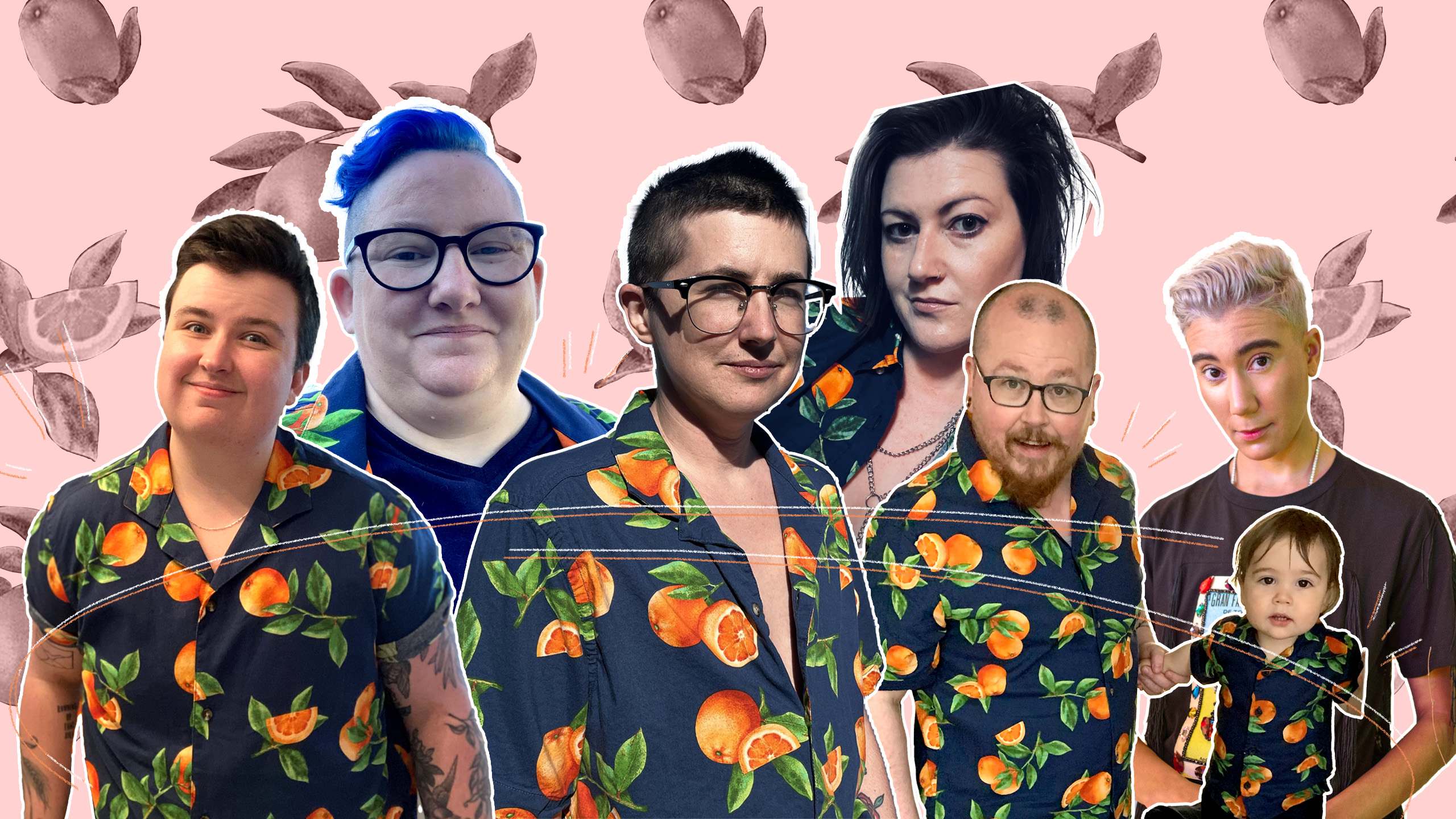

 Why you can trust Xtra
Why you can trust Xtra


